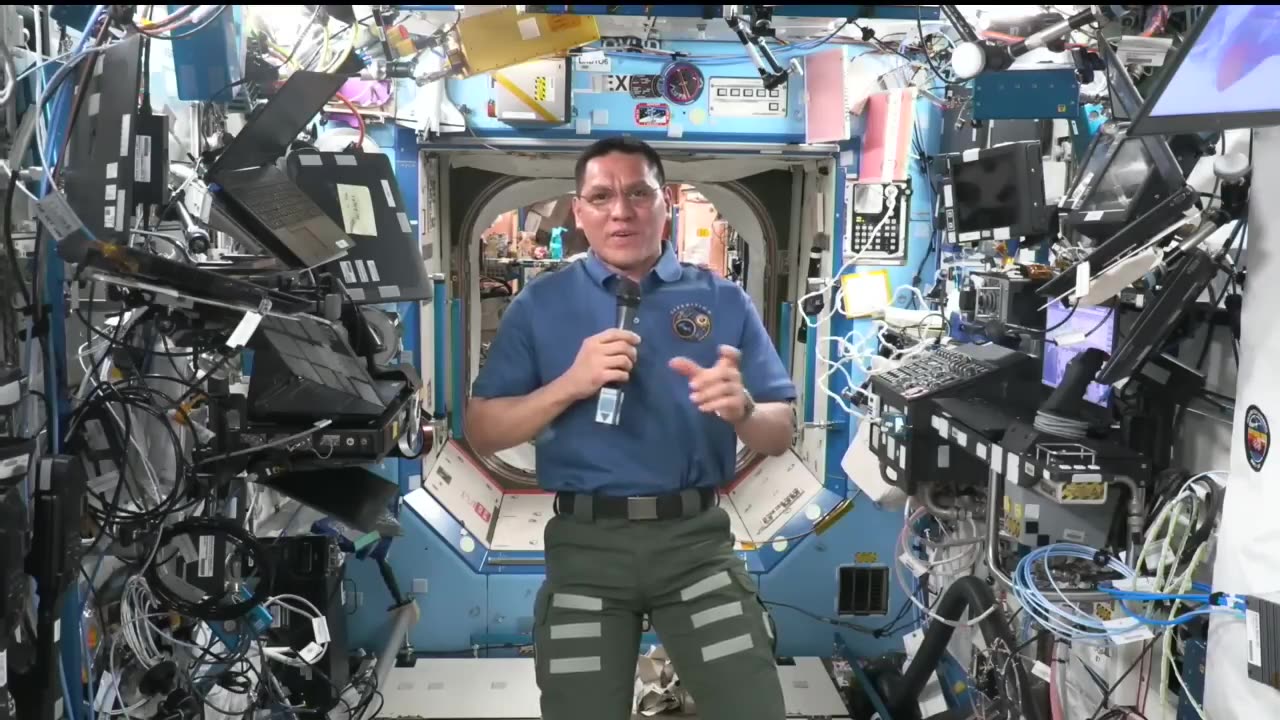Premium Only Content

A call from Space (International Space Station)
Receiving a "call from space" typically refers to communication with astronauts aboard a spacecraft or space station. Astronauts communicate with mission control centers on Earth using radio signals and satellite communication. These calls are essential for coordinating activities, receiving updates, and ensuring the safety and success of space missions. Such calls may include voice communication, data transmission, and video conferencing.
Technology enables communication with astronauts in space through a combination of advanced hardware and well-established principles. Here's how technology makes a "call from space" possible:
Radio Waves: The primary means of communication with spacecraft in space is through radio waves. Spacecraft and space stations are equipped with high-frequency radio transmitters and receivers. These radios can transmit and receive data, including voice, video, telemetry, and scientific measurements.
Ground Stations: On Earth, there are ground stations strategically located around the globe. These stations have large, high-gain antennas and powerful transmitters. They establish and maintain a connection with spacecraft in orbit or on interplanetary missions.
Satellites: For interplanetary missions or missions to the moon, communication can be relayed through specialized communication satellites. These satellites act as intermediaries, relaying signals between the spacecraft and Earth-based ground stations, ensuring continuous coverage even when the spacecraft is not in direct line of sight with a ground station.
Modulation and Encoding: Data sent to and from space is modulated and encoded for efficient transmission. This minimizes errors and ensures the integrity of the information being transmitted. Various modulation schemes are used to encode data onto radio waves.
Tracking and Telemetry: Ground stations use sophisticated tracking systems to locate and communicate with the spacecraft. They also receive telemetry data, which includes information about the spacecraft's health and status, such as its position, orientation, and system performance.
Antenna Technology: Spacecraft are equipped with high-gain antennas that can be precisely pointed toward Earth. These antennas are crucial for sending and receiving signals over vast distances and through the vacuum of space.
Data Compression: To make efficient use of limited bandwidth, data compression techniques are employed. This reduces the amount of data that needs to be transmitted while preserving essential information.
Time Delay: One significant challenge in space communication is the time delay, or latency, in the signal due to the vast distances involved. For example, there is a noticeable time delay in communication with Mars rovers. This delay affects the way real-time commands are sent and received.
Redundancy and Reliability: Space missions depend on redundancy and multiple communication pathways to ensure reliability. If one communication link fails, there are backup systems in place to maintain contact with the spacecraft.
Encryption and Security: To protect sensitive information and communication integrity, encryption and security measures are often employed in space communication systems.
In summary, technology enables communication with spacecraft in space through the use of radio waves, ground stations, satellites, advanced tracking systems, and data encoding techniques. These technologies are essential to support human and robotic missions in space, ensuring that astronauts and space missions remain connected to mission control on Earth.
#NASA #ISS #internationalspacestation #spacex #galaxy #universe #solarsystem #astronomy #spaceexploration
-
 1:40:52
1:40:52
Russell Brand
2 hours agoCalifornia Burns! Who’s Really to Blame? – SF519
39.4K36 -
 LIVE
LIVE
The Officer Tatum
1 hour agoLIVE: Pete Hegseth DESTROYS Leftist at Confirmation Hearing! + MORE Officer Tatum Show EP 41
2,245 watching -
 1:58:28
1:58:28
The Charlie Kirk Show
2 hours agoThe Hegseth Confirmation Hearing | Larsen, Dr. Marshall, Halperin | 1.14.2025
65.5K52 -
 12:15
12:15
Reforge Gaming
3 hours agoPlayStation has a First Party Problem
62 -
 7:12
7:12
Rethinking the Dollar
3 hours agoIs the Catalyst For the Next Financial Crisis...Homeowners Insurance?
1192 -
 2:02:13
2:02:13
LFA TV
19 hours agoHEGSETH HEARING LIVE! | LIVE FROM AMERICA 1.14.25 11am
44.4K25 -
 46:04
46:04
Grant Stinchfield
2 hours ago $0.76 earnedDevious Jack Smith Vindicates President Trump with One Line the Media Won't Repeat
4.06K1 -
 18:12
18:12
ROSE UNPLUGGED
1 day agoTom Homan: They Can't Cancel Me- I'm Not Going Away
97 -
 DVR
DVR
TheAlecLaceShow
3 hours agoNavy SEALs March on Washington for Pete Hegseth | The Alec Lace Show
1.93K1 -
 1:16:46
1:16:46
Bare Knuckle Fighting Championship
1 day agoThe Bare Knuckle Show with Brian Soscia
13.6K